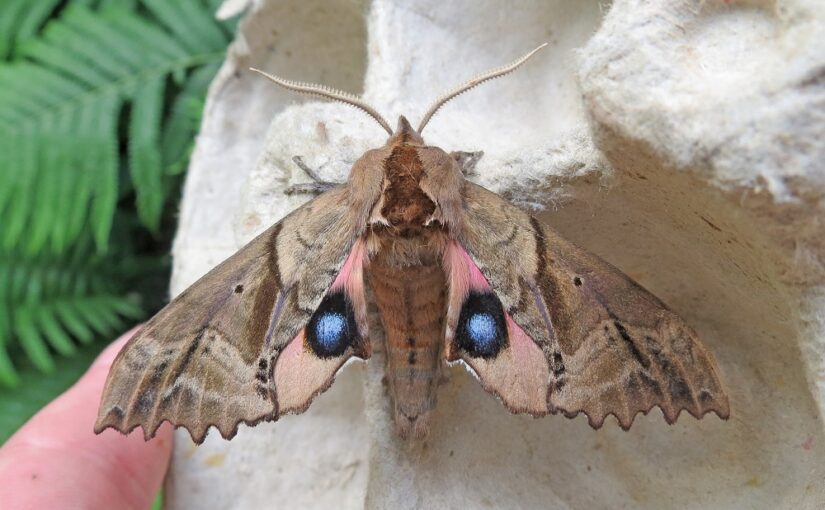Today’s blog comes from Murphys Point Provincial Park Assistant Superintendent Mark Read.
With an ever-increasing interest in some of the smaller wildlife found in our provincial parks, moths are quickly becoming the new park stars!
In fact, when looking at Ontario Parks’ iNaturalist project, you can find five native species sitting right up there amongst some of the most frequently observed wildlife across our entire network of parks.
Here are 5 of the most common moth species found in Ontario Parks:
Pale Beauty (Campaea perlata)

With its subtle green shading and white edging to stronger green lines across both sets of wings, the Pale Beauty is an easy one to identify.
The Pale Beauty is quite large with a wingspan of 3-5 cm. This species is commonly found hanging out around park buildings in the evening and early mornings.
Peak times for seeing this one are June and August, though they can be encountered from May right through to October.
The caterpillars feed on a wide range of deciduous trees.
Hickory Tussock Moth (Lophocampa caryae)

The Hickory Tussock Moth is a boldly-patterned species that is typically seen from May to July, with most observations occurring in June.
The larvae, however, are most commonly seen in August and September.
Caterpillars pupate in the fall and spend the winter cocooned within insulating leaf litter before the cycle begins again the following year. Since the hairs can cause skin irritation in some people, these caterpillars are best left alone!

The caterpillars of this species also feed on a wide range of deciduous trees but their favourites are the hickories. In fact, the second part of their scientific name “caryae” refers to this fact.
Painted Lichen Moth (Hypoprepia fucosa)

This little gem is only 1.5 cm from head to tail, but packs a punch with its bold pattern of orange-yellow stripes and slate grey base.
A similar species called the Scarlet-winged Lichen Moth has (wait for it) bright scarlet stripes instead.
Sticking with the clues these common names provide us, the caterpillars feed primarily on lichens (and moss) growing on trees.
The adults are attracted to lights in small numbers and are most commonly seen in July and August.
They are presumed to have just a single brood, though there is still much to learn about this particular family of moths. Sharing your observations on iNaturalist may help shed light on this little-understood species!
Blinded Sphinx (Paonias excaecata)

Sphinx moths are visitor favourites. They come in a variety of shapes and sizes, and the Blinded Sphinx is by far the most common.
The specimen above is showing subtle hints of purple/violet, but it doesn’t take long for that to fade away leaving a cryptically camouflaged individual that’s hard to spot against leaf litter or the bark of a tree.
Interestingly, when threatened, many sphinx moths spread their wings to reveal striking “eye-spots” on the hind-wing which are thought to deter predators.

The caterpillars are impressive too, feeding on a variety of hardwoods such as Basswood and Hophornbeam. Adults are most frequently seen in late June and July; caterpillars in August and September.
Luna Moth (Actias luna)

Seen most frequently during June, the lime green Luna Moth is one of North America’s largest species, with a wingspan of 11-18 cm!
Like the Blinded Sphinx, the adults do not have mouthparts and therefore don’t feed. This limits the length of their adult lives to a just a few days, during which time they must find a mate and lay eggs.
Males have particularly large antennae that are used to detect the pheromones produced by the females. It is estimated that males can detect females at a range of several miles. However, the long journey is fraught with danger and research is suggesting that the long, twisted tail is believed to inhibit the ability of bats to detect them.
There are so many marvelous moths!
To find out more about the moths (and other fauna and flora) found in Ontario Parks, visit our iNaturalist project!
Even better, consider sharing your own observations as this will add to our knowledge of what’s out there.
Need a crash course in iNaturalist? Check out this blog.
